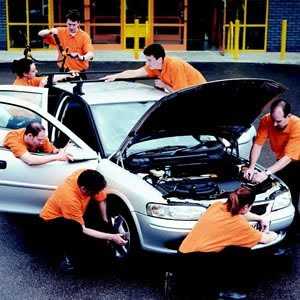Batteries are the single most important component within a car. Long after you have turned the engine off, batteries are continually supplying many electrical components with the power they need, such as; engine management systems, sat nav, alarm, clock, radio memory, and more. Due to this demand, batteries can become drained in a matter of weeks if not maintained in the correct manner by either driving the vehicle long enough to replace lost charge or by the use of a battery charger.
When planning to not use your vehicle for extended periods, checking and boosting every 30 - 60 days is simply not enough to guarantee your battery will not self-discharge to a critical level. This 'under charging' results in 'sulphation' if the battery voltage is allowed to drop and remain below 12.4 volts. This sulphation is the hardening of the lead plates within the battery and it reduces the battery's ability to accept or hold a charge. This is where we would then recommend the use of a charger to maintain the charge in a battery.
Charging - There are a few different methods of charging to maintain a battery:
1. Charge with a regular battery charger. Downside of this is that often these aren't automatic and do not turn themselves off when full charge is reached. If left unattended a battery can become 'boiled dry' from overcharging. The battery becomes extremely dangerous due to highly explosive gasses produced from charging at a high rate and the casing becoming very warm introducing a fire risk.
2. Trickle charging. This is where the charging device provides the connected battery a low steady charge. Drawback of this method is that these will only give out a constant low charge which is often not enough to keep a battery above the critical voltage of 12.4 volts. In essence they may maintain a good battery but not recharge it if the voltage level becomes too low.
3. Battery conditioners. At Windrush Car Storage we connect all vehicles to a battery conditioner. These are fully automatic battery chargers, which monitor, charge and maintain the battery without the risk of overcharging. These can be left switched on and connected for long periods of time (years) without the risk of gassing or overheating. Simply the best of both of the above.
Battery maintenance - Before connecting a charger it is advisable to be aware of a few basic points;
1. Make sure battery fluid level is between the minimum and maximum marks, if the battery isn't a sealed unit. Top up with distilled or de-ionised water (the acid in the battery doesn't need replacing since it is not consumed).
2. Clean battery terminals and lead connectors with a wire brush, ensure the positive and negative leads make a good fit to each of the terminal posts and use a dedicated battery terminal spray or petroleum jelly to prevent corrosion.
Note: Before disconnecting the battery, ensure that you have the relevant code for the radio if required. This will need to be entered for the radio to function on re-connection of the battery.


 9:07 PM
9:07 PM
 admin
admin




0 comments:
Post a Comment